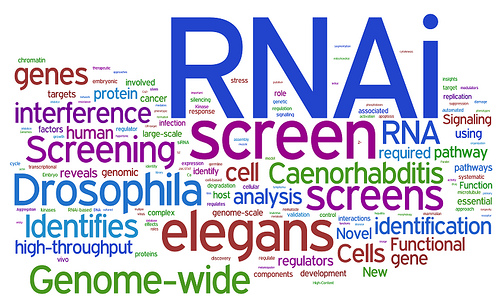RNA interference (RNAi) is one of our bodies’ mechanisms for regulating genes. These RNAi molecules are programmed to detect foreign genes, mark them as viruses and destroy them (and anything that looks like them). This RNAi essentially silences specific genes and it is the body’s main way to ward off viruses. This one small mechanism regulates translation, transcription, chromatin structure, cell growth, and genome integrity. RNAi therapy can also reduce viral issues and can be a possible treatment for specific medical issues such as HIV, Cancer, and Arthritis.
During the cell cycle, cells undergo regulation, which is crucial to the cells’ survival. Multiple mechanisms in the cell cycle work to restrain or activate cell division. There are checkpoints throughout the cell cycle where the cells are verified for sufficient amounts of nutrients and raw materials to progress through the next stage of the cycle. The three major checkpoints are G1, s, and G2. Density dependent inhibition is the process in which crowded cells stop dividing. Growth factors also help with regulation. These are proteins released by certain cells that stimulate other cells to divide.
Organisms regulate their body temperature in a way to reach homeostasis. This regulation is done through thermoregulation. For example, humans are endotherms who regulate their body temperature internally. When it is hot outside, humans go through a process called vasodilatation in which the capillaries are closer to the skin and it allows for a cooling effect. Humans also use sweating and bathing to reach homeostasis. When a human is cold, the capillaries undergo vasoconstriction in which the blood vessels shrink and have a warming effect.
Osmotic regulation of the blood is also essential for homeostasis. Marine animals are hyposmotic to their environment and they need to regulate the water in their blood, because they are constantly in a watery environment. These fish drink a lot, urinate rarely, and secrete salt through their gills to maintain homeostasis in water.
Regulation of a population occurs naturally and is outlined by Darwin’s focus on density dependent and density independent factors. Density dependent factors are directly because the size of the population. Food is a necessity for all animals and if there is not enough to sustain the population, then the population will decrease and become regulated. The predator prey relationship is also a major way for populations to be regulated. When a population increases there is then an increased amount of prey for predators, the predators will eat the prey, regulating the prey population. As all the prey are consumed, there is not enough food for the predators, and the predators will die off. Essentially the prey is also regulating the predator population. Density independent factors can also greatly effect and regulate a population. These factors included natural disasters like fire or floods that can harm a population.
Communities also experience regulation. A community is two or more populations living close enough together for a potential interaction. Interspecific interactions link species in a community. This regulates members of a community because the two species compete for resources and the result is detrimental to both of the species. The competitive exclusion principle also regulates communities. Two species with similar needs for the same living resource cannot coexists in the same place or occupy the same niche.
The entire biosphere also undergoes regulation to reach homeostasis. This is achieved through feedbacks. For example, when carbon dioxide levels in the atmosphere rise plants are able to grow better and then remove more carbon dioxide from the atmosphere. The Gaia principle is a hypothesis that states that the entire biosphere is working in junction to maintain climate and biochemical conditions to maintain a homeotic state. This principle regards everything on earth, creating the biosphere, as a single organism working to regulate earth. Another example of this hypothesis includes Dimethyl Sulfide Production. Phytoplankton produces this dimethyl sulfide, which they release into the air. This sulfide is then converted into sulfuric acid, which become nuclei for cloud condensation. This produces thicker clouds, which blocks the sun and cools the water.






